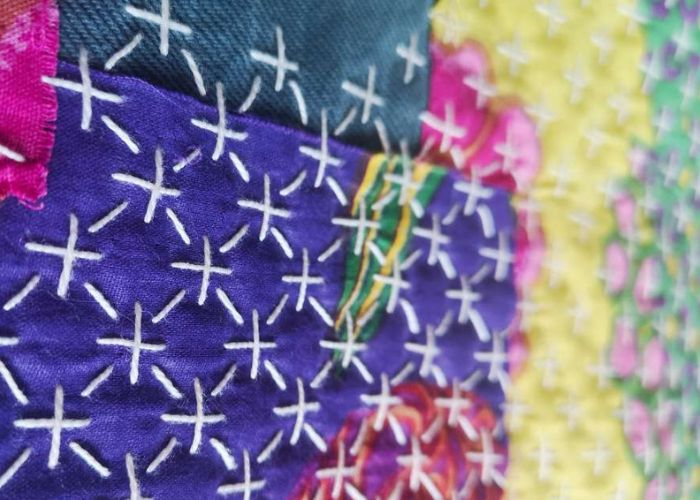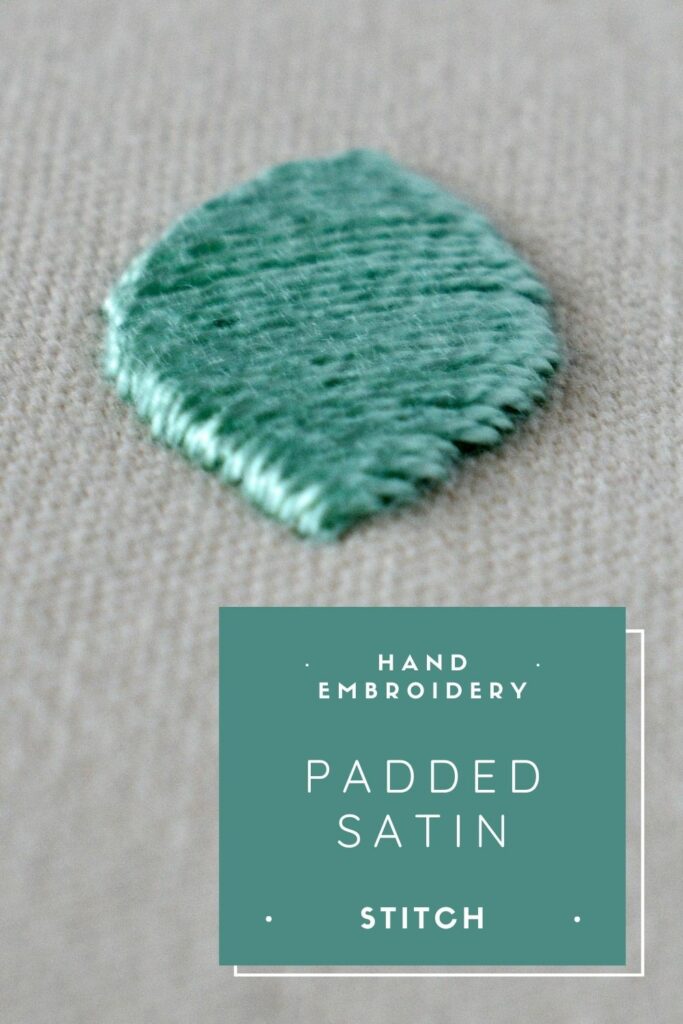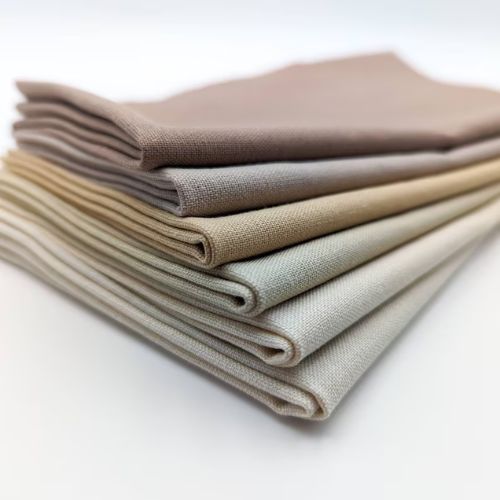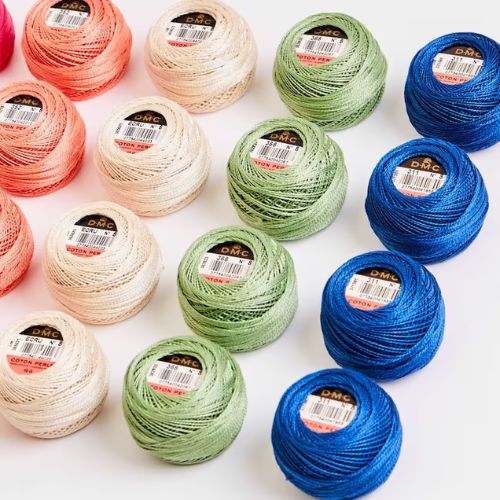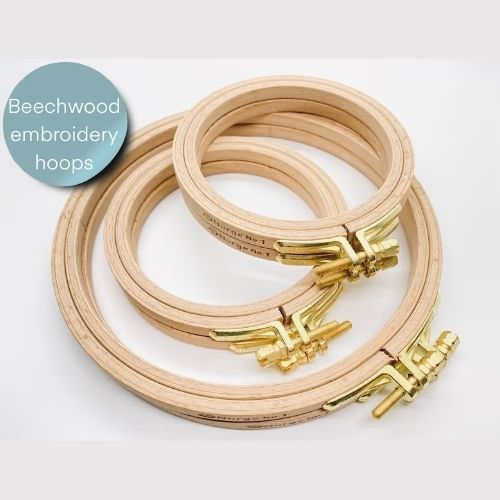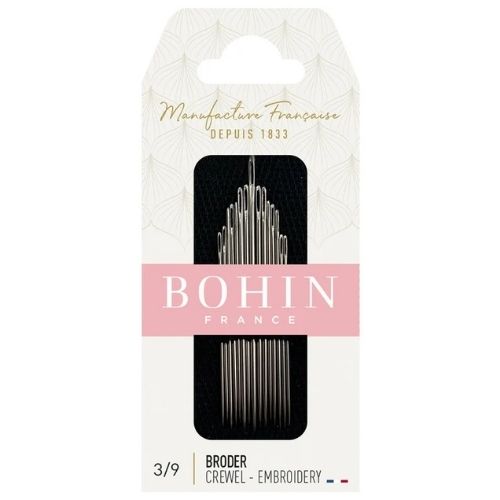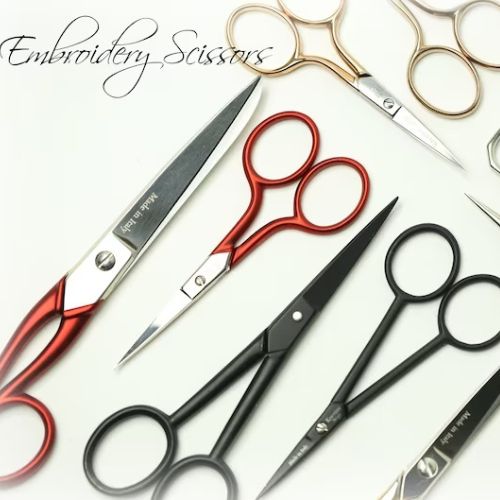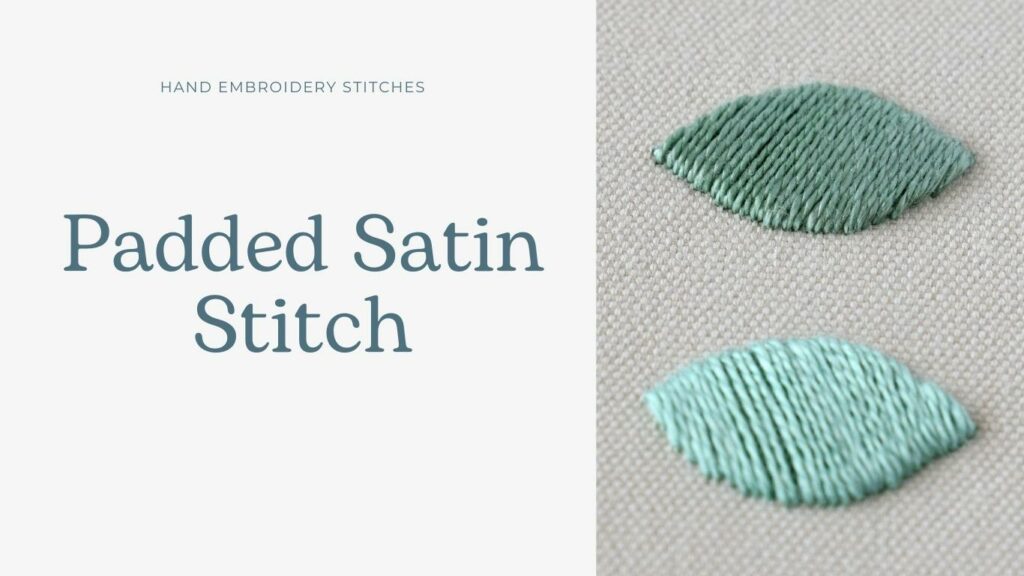
Padded Satin Stitch
Padded Satin Stitch is a hand embroidery technique from the Satin Stitch family. To create a raised look, we add some layers of padding under the Satin stitches. There are various ways to add padding – from Seed stitch padding to Laid Work padding or Split Stitch padding. Each padding technique has its own benefits:
- Seed Stitch padding will create a slightly raised, flat, Padded Satin Stitch.
- Laid work padding is excellent for simple, wide shapes. Layers of Surface Satin stitches (laid work) are embroidered one above another to create a dome-shaped figure where the shape’s center is raised the most. Padding is fast to make and gives a puffed look to a Padded Satin Stitch.
- Padding made with Split Stitch is very flexible. This method can be used for more complex shapes, narrow elements, or curved designs filled with Padded Satin Stitch. This padding method is often used in monogramming.
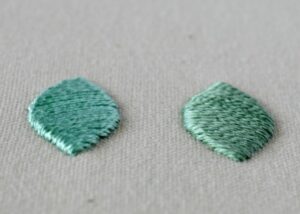
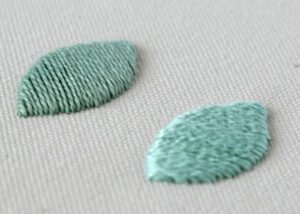
Applications of the Padded Satin Stitch
Padded Satin Stitch is a decorative filling hand embroidery technique that creates expressive dimensional shapes. It looks great in monochromatic embroideries, botanical pieces, and monogramming.
Variations of the Satin Stitch
Learn how to embroider Padded Satin Stitch
Follow the step-by-step tutorial with detailed photos below, and you will learn the Padded Satin Stitch quickly. If you are a visual learner, watch a video lesson in the tutorial or on the Practical Embroidery YouTube channel to learn this hand embroidery stitch faster.

How to embroider Padded Satin Stitch
Step-by-step hand embroidery tutorial
Instructions
1. Draw the shape you wish to fill with Padded Satin Stitch and outline it with Split Stitch. For the outline, you can also use other stitches – like Chain Stitch or Stem Stitch.
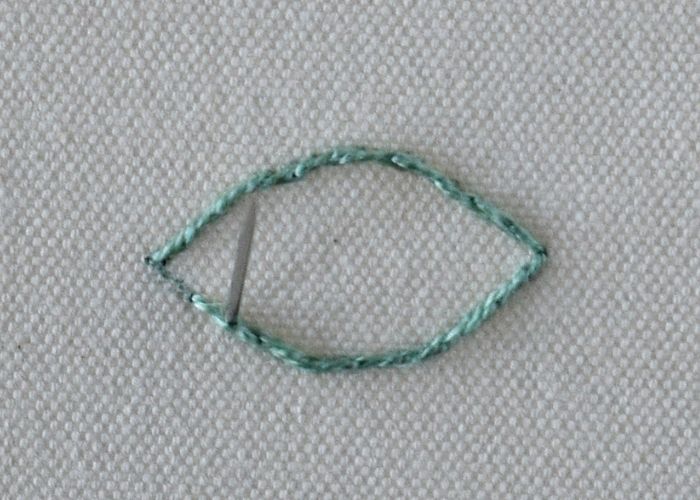
2. Mark the guiding lines for padding. I will make three layers of padding.
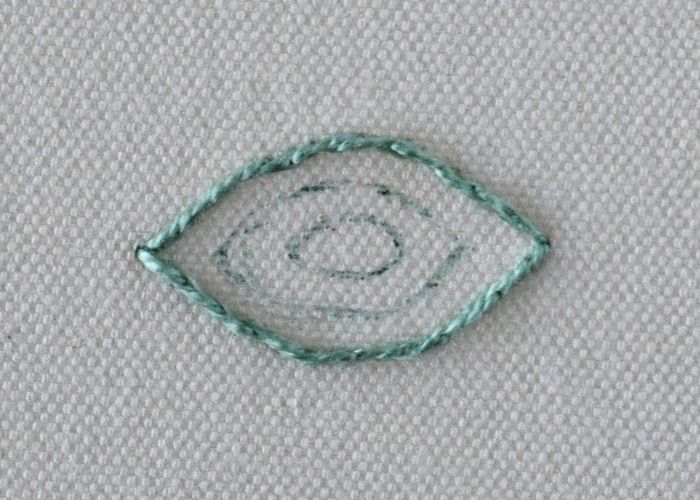
3. Make the vertical filling with Surface Satin stitch (aka Laid work) on the central piece. Start in the center and fill one side.
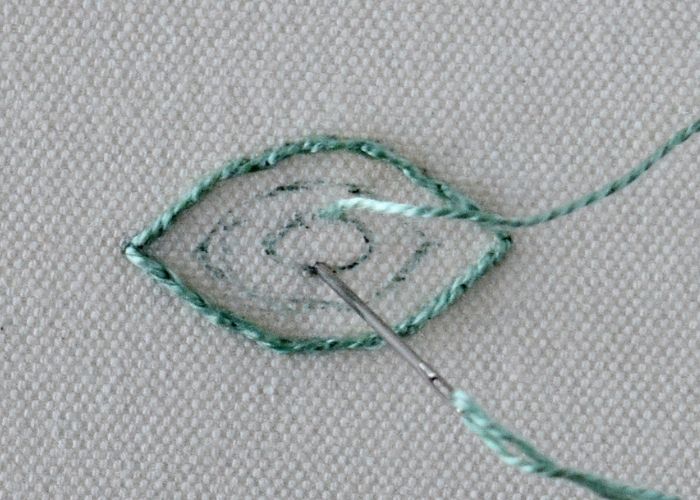
4. Then, return to the center and fill out the second part of the shape.
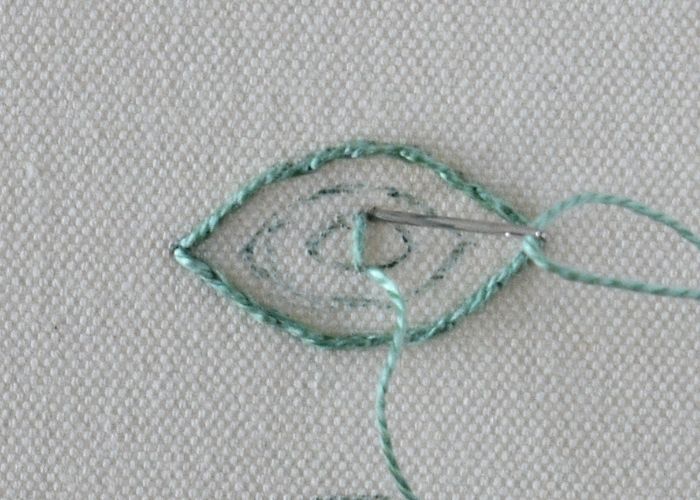
5. Add one more layer of padding. This time, the stitches are horizontal, not vertical. Make the stitches of each layer of padding in different directions.
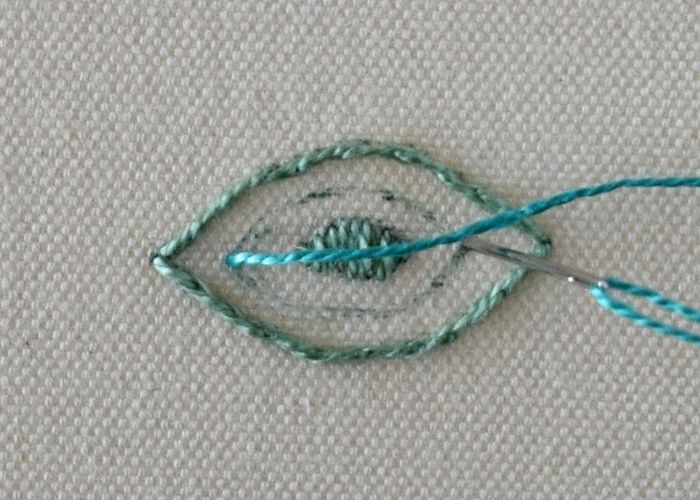
6. You can use different colors of thread for padding, as the lower layers will not be visible. This trick can help you save expensive threads like silk and substitute them with cheaper options like cotton.
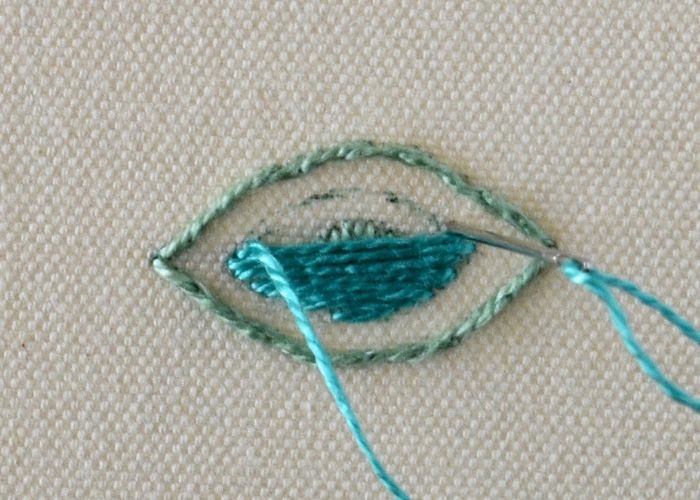
7. The final layer of padding is diagonal.
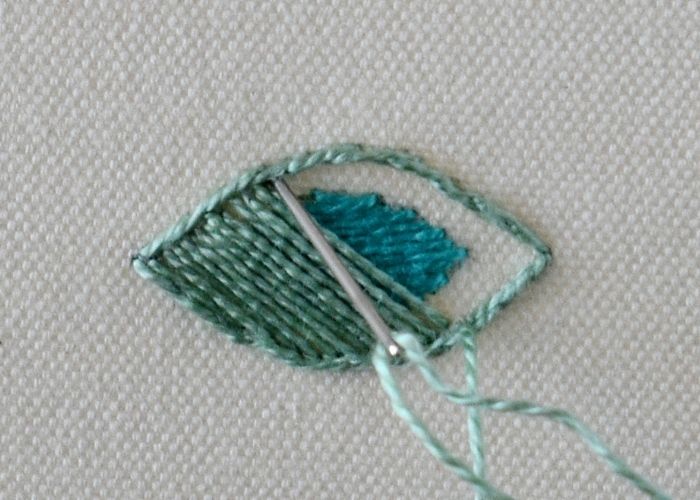
8. When all the layers of padding are finished, start embroidering the Satin Stitch. The direction of the stitches is perpendicular to the last layer of padding (plan this accordingly). Start filling at the center of the shape and move toward the edge.
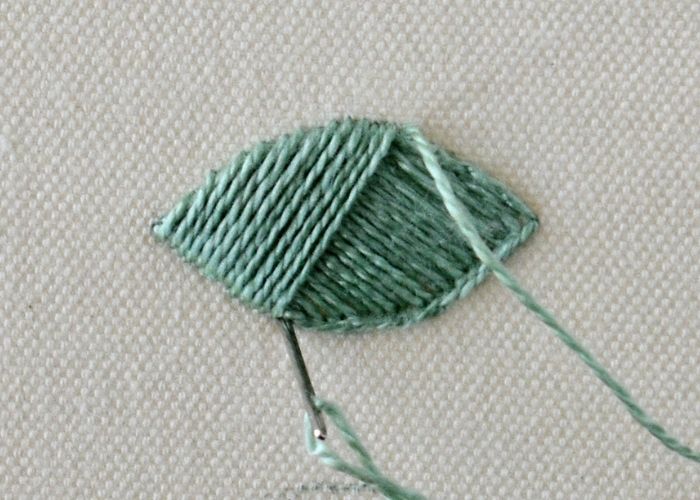
9. When one side is filled, return to the center and fill the second part of the shape.
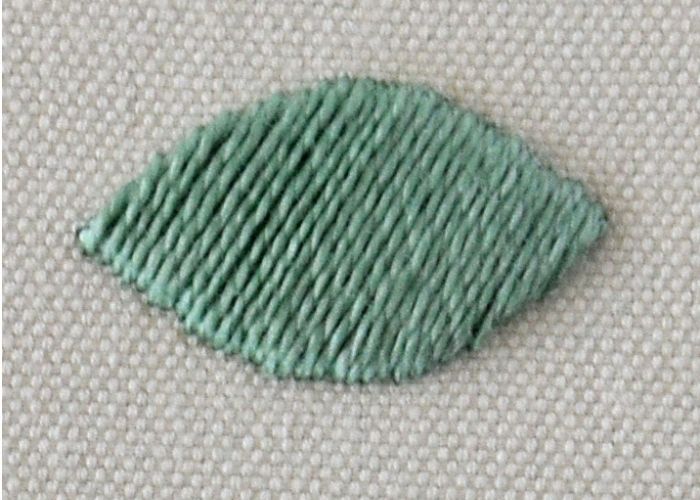
Video tutorial
Tools and materials I used for this sampler
Disclaimer. To cover the cost of creating free embroidery patterns and video tutorials for this blog, I do sometimes link to products. Please assume these links are affiliate links. If you choose to buy through my links then THANK YOU – it will make it possible for me to keep doing this.
What’s next?
If you’re in the mood to explore more hand embroidery stitches, check out the Stitches and Techniques page for the list of other fantastic stitches available on my blog. From timeless classics to modern twists, a whole world of stitches is waiting for you to explore and master. So, grab your hoop and needle, and let’s stitch our way to creative bliss!
Don’t miss a thing!
Follow me on YouTube, Instagram, Facebook, and Pinterest. Or why not subscribe to Practical Embroidery newsletter and get embroidery tips straight to your inbox every few weeks?
Projects to practice the Padded Satin stitch
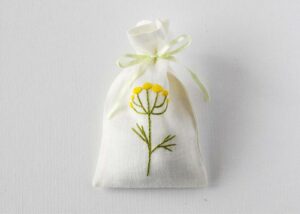
Scented sachets with a floral embroidery DIY tutorial
DIY tutorial + Free PDF pattern download
Need More Guidance?
The top 10 hand embroidery stitches to learn is a free online course created for beginners.
